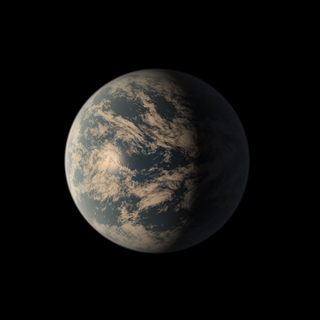TRAPPIST-1d
extrasolar planet From Wikipedia, the free encyclopedia
Remove ads
TRAPPIST-1d, also known as 2MASS J23062928-0502285 d, is a small exoplanet which is about 40% the mass of the Earth. It orbits on the inner edge of the habitable zone of the ultracool dwarf star TRAPPIST-1. It is located 40.7 light years away from Earth in the constellation of Aquarius. The exoplanet was found by using the transit method, which means the dimming effect that a planet causes as it crosses in front of its star is measured. The first information about the planet were announced in 2016, but it wasn't until the following years that more information about the likely nature of the planet was obtained. TRAPPIST-1d is the second-least massive planet of the TRAPPIST-1 system and is likely to have a thin hydrogen-poor atmosphere that is closely packed together similar to Venus, Earth, or Mars.[6] It gets just 4.3% more sunlight than how much sunlight the Earth gets from the sun, placing it on the inner edge of the habitable zone.[7] It has about less than 5% of its mass as a volatile layer, which could consist of atmosphere, oceans, and/or ice layers.[3] A 2018 study by the University of Washington came to a opinion that TRAPPIST-1d might be a Venus-like exoplanet with an uninhabitable atmosphere.[8] The planet is an eyeball planet candidate.[9]
Remove ads
References
Wikiwand - on
Seamless Wikipedia browsing. On steroids.
Remove ads

